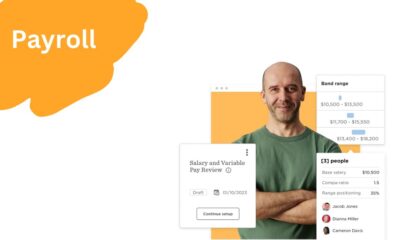Healthcare
Types of Data Analytics in Healthcare and How It Is Used
Many modern organizations use data analytics to build strategies, make decisions, and identify trends. This approach is also being adopted by the healthcare industry, reinforcing the value of healthcare predictive analytics for organizations and patients.
Data analytics helps medical institutions assess and develop medical practitioners, identify anomalies, and predict new disease outbreaks.
In addition, investments in data analysis allow organizations to reduce costs while optimizing many processes.
Among the main benefits of data analytics is the ability for institutions to make better decisions about patient care, as well as improve management.
Thus, decisions based on data and facts contribute to the achievement of the organization’s goals, reduce risks, and allow better treatment and medical services to be provided to patients.
Let’s take a look at some of the main types of healthcare data analytics, how it works, and why it’s essential.
Main Types of Healthcare Data Analytics
Healthcare data analytics is of several types and can have different objectives. The most commonly encountered types of analytics include:
- Descriptive analytics. This type of data analytics allows organizations and clinicians to gain insight into key metrics and trends. Here, historical data about patients and their health are most often used.
- Discovery analytics. The core value of this type of analytics is the study of clinical data to identify several patterns, thereby obtaining useful information. Often, such a type of analytics uses artificial intelligence and machine learning algorithms to analyze data.
- Prescriptive analytics. This type of analytics is usually applied to propose a strategy. Similar to discovery, prescriptive analytics also makes the most use of AI and machine learning to get things done.
- Predictive analytics. This is one of the most valuable types of analytics in today’s healthcare industry. Data-driven predictive analysis facilitates forecasting and modeling of different scenarios, which allows medical institutions to predict various probabilities and events that may occur in the future. Thus, predictive analytics makes it possible to prepare in advance for bad events and avoid many risks.
Each of these types of analytics uses different tools and categories of data. The primary value of analytics in healthcare is that it provides organizations with actionable insights that enable them to make informed decisions and deliver better patient care plans. Moreover, data analysis helps to prepare for risks, which became especially critical after the COVID-19 pandemic, when many medical institutions were not ready for a large influx of patients.
How Data Analytics Is Used In Healthcare
Data analytics is essential to modern medicine. The collection of different categories of data and their deep analysis makes it possible to assess what is happening right now, what happened in the past, and what may happen in the future.
These three types of questions allow you to make effective decisions and adapt to possible changes in time.
In the case of the healthcare industry, data analytics provides several key benefits:
- It helps to prevent future diseases
- It helps to prepare for possible epidemics
- It reduces the risk of re-hospitalization of patients
- It improves patient outcomes
- It leads to lower health insurance costs
Data analytics provides significant benefits for both medical organizations and patients.
Investment in health software development is essential for today’s medical institutions, as it gives valuable information that can be converted into robust solutions. This approach contributes to the positive dynamics of the development of the healthcare industry and also helps service providers achieve the desired results when it comes to both treatment outcomes and the organization’s management.
At the same time, one of the biggest benefits of data analytics in the healthcare industry is that it helps physicians make better decisions about patient care. Also, the ability to quickly collect and analyze large amounts of data allows you to more accurately predict the development of large-scale events and create plans for the long term.
Another area where data analytics is a valuable tool is public health management. This leads to better clinical outcomes for different patient groups and also helps to improve the interaction between physicians and patients. Here, artificial intelligence algorithms allow the creation of predictive models, thereby helping to promote health initiatives for specific populations. With this approach, physicians can identify the most vulnerable patients to maximize the quality of care for these groups and reduce risks.
Thus, data analytics is one of the most reliable tools to improve the efficiency of healthcare systems, adapt to changes in time and provide better healthcare services and patient care plans.
Final Thoughts
Data analytics is among the major trends in today’s healthcare industry. The two main reasons this is happening are the digital transformation and the COVID-19 pandemic, which has demonstrated the poor preparation of medical organizations for sudden and massive epidemics.
That’s why the importance of data analysis in healthcare has increased markedly. To cope with existing challenges and improve patient care and positive outcomes, data analytics is an extremely valuable and promising tool that allows you to make informed decisions based on a large amount of data and facts.
- Learn more about the role of healthcare software at Ralabs.
-

 Manage Your Business2 days ago
Manage Your Business2 days agoTOP 10 VoIP providers for Small Business in 2024
-

 Cyber Risk Management6 days ago
Cyber Risk Management6 days agoHow Much Does a Hosting Server Cost Per User for an App?
-

 Outsourcing Development6 days ago
Outsourcing Development6 days agoAll you need to know about Offshore Staff Augmentation
-

 Software Development6 days ago
Software Development6 days agoThings to consider before starting a Retail Software Development
-
Edtech2 days ago
How to fix PII_EMAIL_788859F71F6238F53EA2 Error
-

 Grow Your Business5 days ago
Grow Your Business5 days agoThe Average Size of Home Office: A Perfect Workspace
-
Solution Review5 days ago
Top 10 Best Fake ID Websites [OnlyFake?]
-
Business Imprint6 days ago
How Gaming Technologies are Transforming the Entertainment Industry













